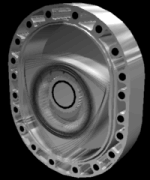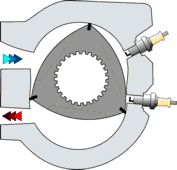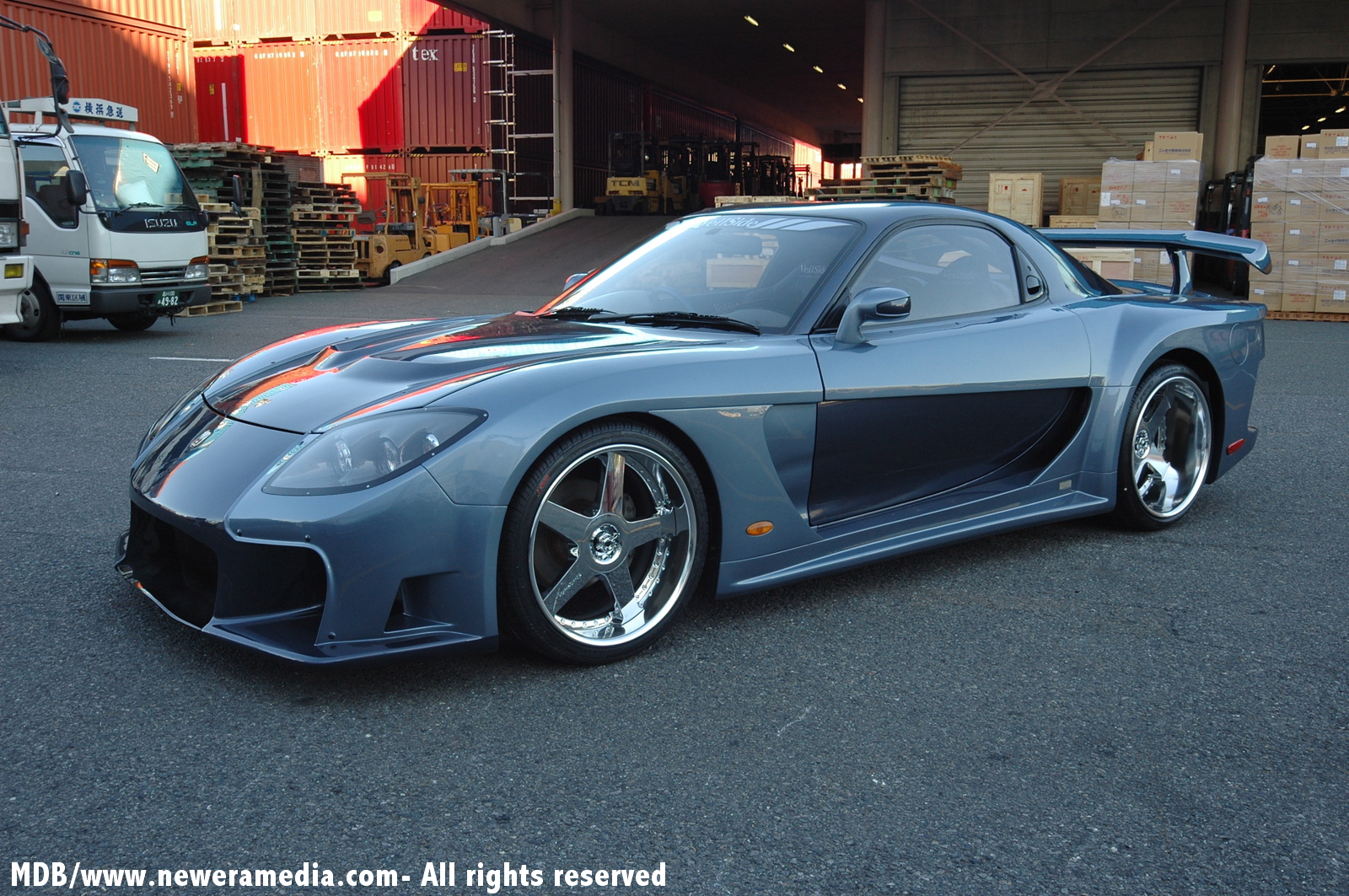| |
| |
| Rotary engines are very different from internal combustion engines. The only automaker known to use rotary engines is Mazda. |
|
| All Mazda Wankel "rotary" engines are essentially a single family — they all derive from the first Wankel experiments in the early 1960s. Over the years, displacement has been increased (somewhat), and turbocharging has been added to great effect. |
|
| Wankel engines can be classified by their rotor size in terms of width (diameter) and depth (thickness). These metrics function similarly to the bore and stroke measurements of a piston engine. Nearly all Mazda production Wankel engines share a single rotor diameter: 105 mm (4.1 in) with a 15 mm (0.6 in) crankshaft offset. |
| |
| This engine is starting to become popular with kit car builders, hot rodders and in light aircraft because of its light weight, compact size and tuning potential stemming from its inherently high power to weight ratio. |
|
| Mazda was fully committed to the Wankel engine just as the energy crisis of the 1970s struck. The company had all but eliminated piston engines from its products in 1974, a decision that nearly led to the company's collapse. A switch to a three-prong approach (piston-gasoline, piston-Diesel, and Wankel) for the 1980s relegated the Wankel to sports car use (in the RX-7 and Cosmo), severely limiting production volume. But the company has continued production continually since the mid-1960s, and is the only maker of Wankel-powered cars (the RX-8) today. |
| |
| The RX-8 is a higher-volume car than its predecessors (Apr-Dec 2003 60,100 RX8 are produced), and Mazda is considering adding more Wankel models. The company has also developed a hydrogen-powered version of the Renesis. Though sales leveled off in the 1990s, these factors could cause the Wankel to again be a substantial force in the automotive market. |
|
| Mazda has sold rotary engine vehicles in the US since 1971, beginning with the R100, followed by RX-2, RX-3, RX-4, RX-5, and finally three generations of the RX-7 sports car. With the third generation RX-7, Mazda held nothing back and delivered a super high performance sports car with little compromise. The lack of creature comfort and user-friendliness, coupled with the high price tag and declining interest in sports cars and coupes at this time, led to Mazda pulling the RX-7 from most major markets except Japan. Development of the 13B-MSP advanced and eventually led to the RENESIS moniker debuting along with the RX-EVOLV concept car which began to bear semblance to the production RX-8 with the "freestyle" doors. |
|
| The RX-8 was designed as a front mid-engine, rear-wheel drive four-seat coupé. The car has a near 50:50 weight distribution, achieved by mounting the engine behind the front axle and the fuel tank ahead of the rear axle. The front wheels feature classic independent double wishbone suspension, while the rear are independent multi-link. Weight is trimmed through the use of materials such as aluminium (hood & rear doors), and a carbon fiber composite driveshaft on the manual gearbox car. All this contribute to reduced rotational mass (Moment of Inertia) connected to the engine. The rest of the body is steel, save for the plastic front and rear bumpers. While not quite in the league as the last RX-7 in terms of raw performance, the RX-8 is considered its successor as Mazda's rotary engine sports car. |
|
| |









